Visit These Paris Churches While Notre Dame Is Being Restored
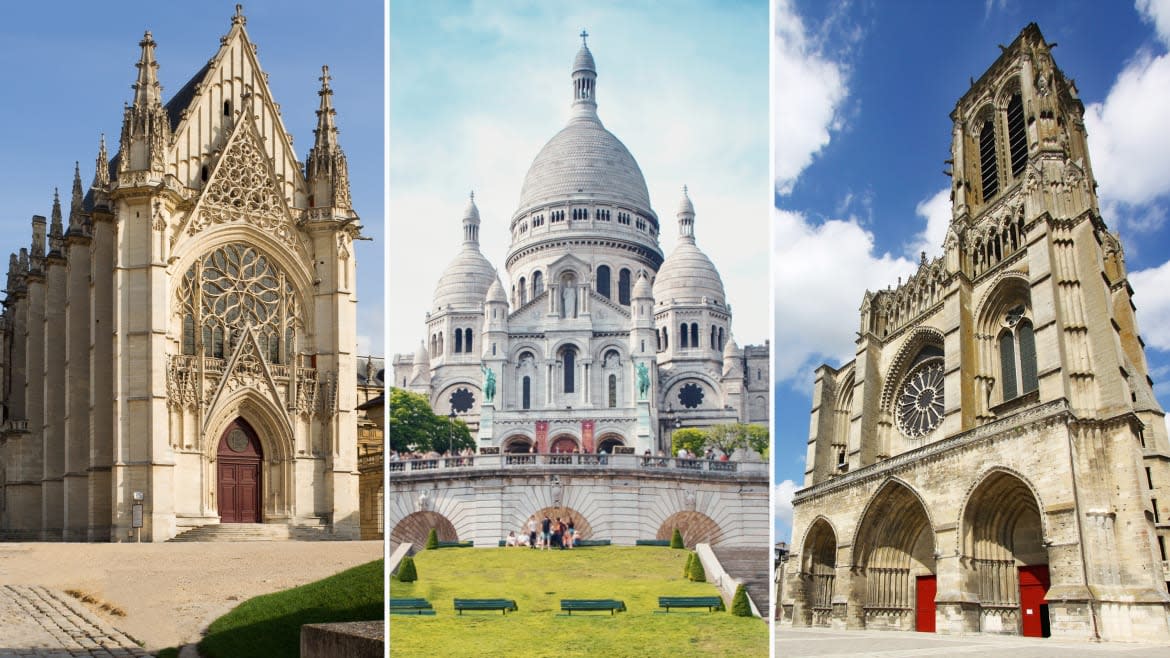
PARIS—As the flames roared from the roof of the Notre Dame on April 15, I stood among the thousands of Parisians who swarmed like bees to the Île de la Cité, the medieval heart of Paris.
For much of that Monday night, I then stood with a group of cops who said the Paris landmark could be gone in two hours. We held our breath silently.
Notre Dame survived by a cat’s whisker. (City officials put the window between life and death for the cathedral at 15-30 minutes of intense work by firefighters that stopped the flames reaching the bell towers that would have seen this Gothic masterpiece crumble.)
As the fire subsided, I wandered through the emptying streets, in what was now the early hours of Tuesday, passing the red fire engines that stood like discarded toys on cobbled streets that were built at a time when motor vehicles were like spaceships of the future. The next night, she stood alone in darkness. Charred but not forgotten.
Then the real journey began. Five long days had passed, going from press conferences at fire stations to the adjacent Hôtel-Dieu, the oldest hospital in Paris, where the firefighters working on site rested.
It was shocking. But the Notre Dame blaze awakened my curiosity and set me off on a journey of discovery that opened my eyes to dozens of forgotten churches that I had spotted around Paris but overlooked, until now.
There are 197 churches in Paris (according to Wikipedia), and 37 Notre Dames, many remarkable, and many of them forgotten. I had noticed quite a few of these churches before, but they remained backdrops to my destination.
The weekend after Notre Dame was ablaze, I found myself, unexpectedly, on both a spiritual and visual odyssey, stepping inside rarefied spaces with an atmosphere quite different to the Paris I had experienced until now.
I discovered great beauty. I found sub-cultures and communities, art, song and life. Young boys placing candles under sky-high domes. Easter rituals carried out in grand costumes. Gospel choirs. Historic interiors in a city so rich in architectural jewels, that when one church steals all the limelight so many others are ignored.
I have never gone to church, even though my grandparents are buried in the most famous of them all—the Church of the Nativity in Bethlehem, which only added to the sense of discovery.
But as the city healed, so did I as a byproduct of my adventure. (I had lost four homes at the end of 2018—a beach cottage in a seaside town where I grew up, a studio where I lived for a year, a dance community which I shared with an invisible family for 10 hours a week, and a friend with whom I shared an emotional space and journey.)
I found inside these houses of God a safe retreat from from the world that I had forgotten existed. The spirit of Christianity opened its doors to me, and this non-believer’s eyes were opened to dozens of stunning spaces and hidden histories all over Paris.
Here’s what I found.
L'Église de la Madeleine
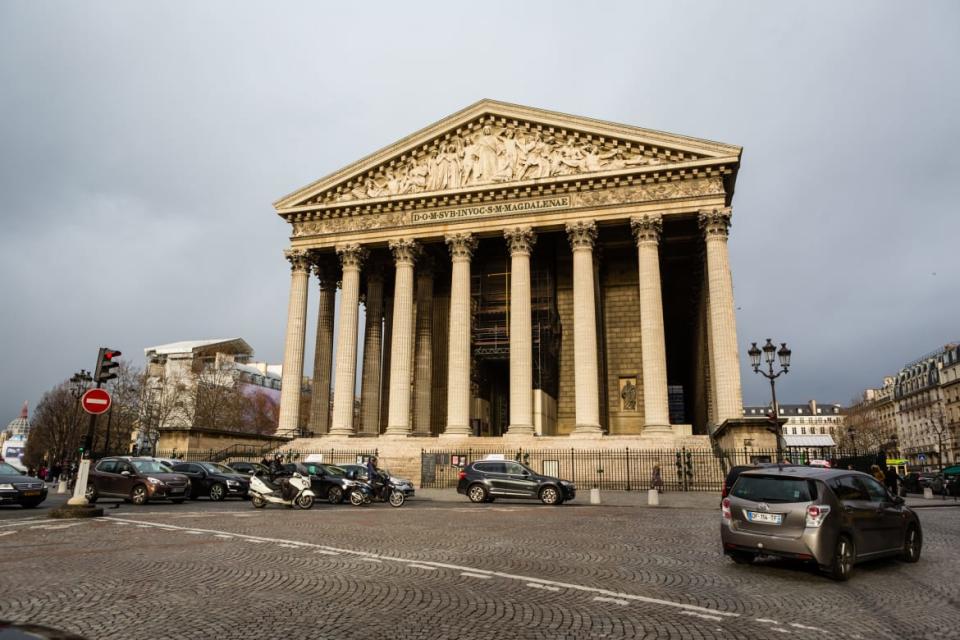
The exterior of L'église Sainte-Marie-Madeleine, known as the Madeleine Church in English.
My adventure began with an immersion into the sounds echoing through the vast interiors of La Madeleine, one of four major churches that has been undergoing renovation here, on Saturday night. A young boy stood beneath the altar repeating, “I believe,” in French, his tiny voice carrying through this imposing neoclassical building which was modeled upon the Pantheon. It was constructed, in its current incarnation, as a temple to the glory of Napoleon’s army, and was the site of Chopin’s funeral. The body of Louis XVI was brought here, to an older church, after his execution. A fresco in the dome above the altar, by Jules-Claude Ziegler, shows Napoleon standing center stage between key religious figures.
Église Saint-Augustin
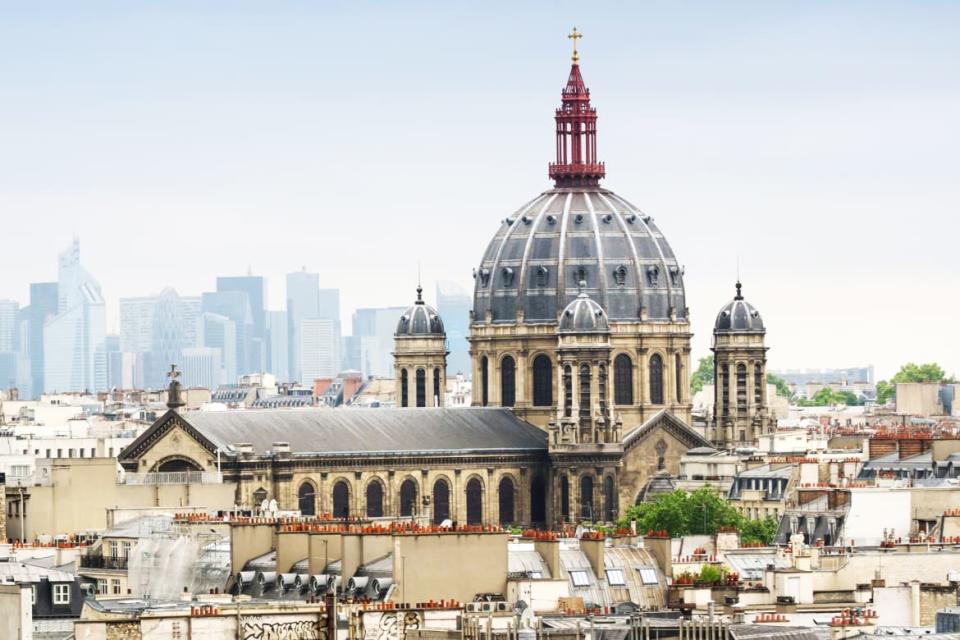
Saint-Augustin Church with Paris Skyline, France.
The journey continued a 10-minute walk north to the highly visible Église Saint-Augustin, which was built during Haussmann’s renovation of Paris, and occupies its own island between a number of grand boulevards. It was built to be visible from both the Madeleine and Arc de Triomphe.
Inside, a guardian was busy ushering people out 30 minutes before closing so this visit was rushed. Still, it was just enough time to see some of the stunning decoration, including cast iron shafts that cross the ceiling. Built between 1860 and 1868, it was intended as the resting place of Napoleon III and Empress Eugénie, who were instead buried whilst in exile in England. This one has also been under renovation, and looks clean and beautiful as a result.
Chapelle Expiatoire
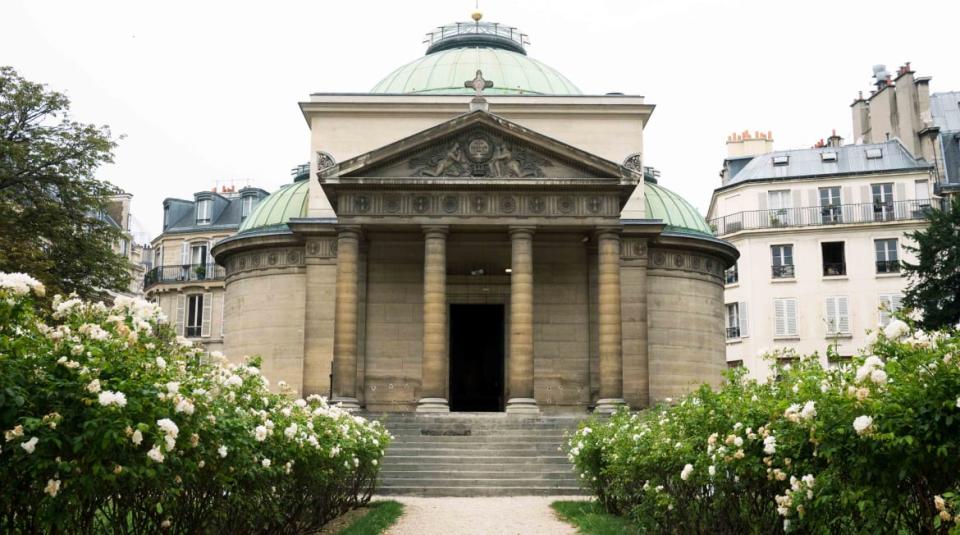
Façade de la Chapelle expiatoire en août 2015 à Paris, France.
A cross on the map lead me to the discovery down the road of a blackened church, surrounded by a small garden, dedicated to Louis XVI and his wife Marie Antoinette, who were first buried here after they were guillotined. The couple were later moved to the landmark Basilica of St. Denis, just outside of Paris, which is a must-see for church enthusiasts. The Chapelle was designed by two of Napoleon’s favourite architects, Charles Percier and Pierre Francois Leonard Fontaine, and completed in 1826. It was designed in a late neoclassical style. Today it looks eerie and abandoned, although it’s open to visitors and tourists. Locals on Saturday night sat on park benches inside this curious looking compound, away from the bustle on the busy streets nearby.
Catholic Church of Notre-Dame-de-l'Assomption
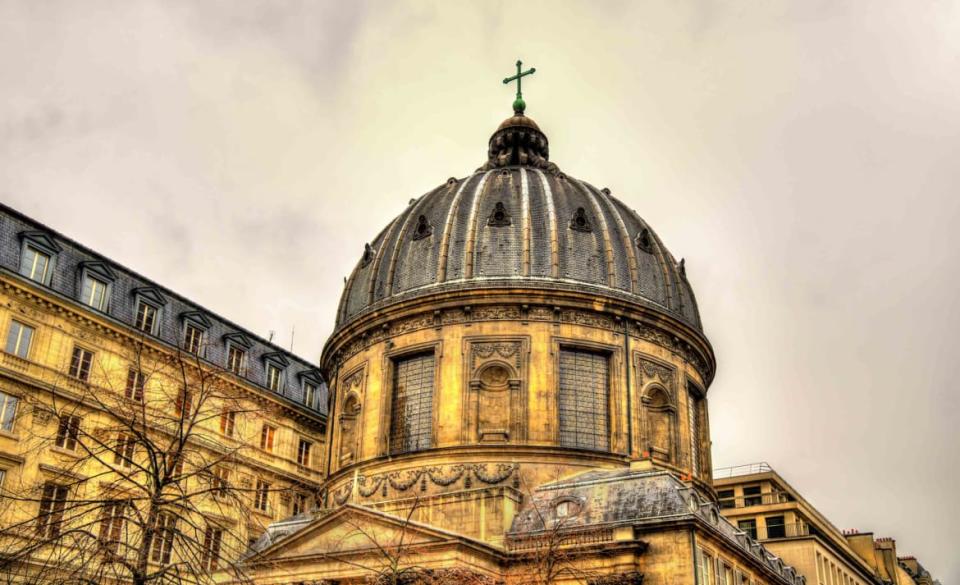
Polish Church of Notre-Dame-de-l'Assomption of Paris - France
The journey continued along Paris’s poshest shopping street, Rue Saint-Honoré, with the discovery that a church, opposite a Chanel boutique, that I have never seen open, is a Polish institution. I wandered inside this beautiful, light space to hear an Easter ceremony in Polish. I quizzed the young Polish men wandering about in white frocks, and was reminded of the community purpose of a church, and the cosmopolitan esprit of Paris. This compact church, filled with beautiful frescoes that sit within the 24-meter-wide rotunda, was also modeled upon the Pantheon. The design was then altered, as it was considered too radical for Paris in the 1670s. It was built on land bequeathed by the Jesuits to the Sisters of the Assumption. French painter Charles de La Fosse painted the 65 meter square fresco of the Assumption of the Virgin Mary, up above.
Église Saint-Roch
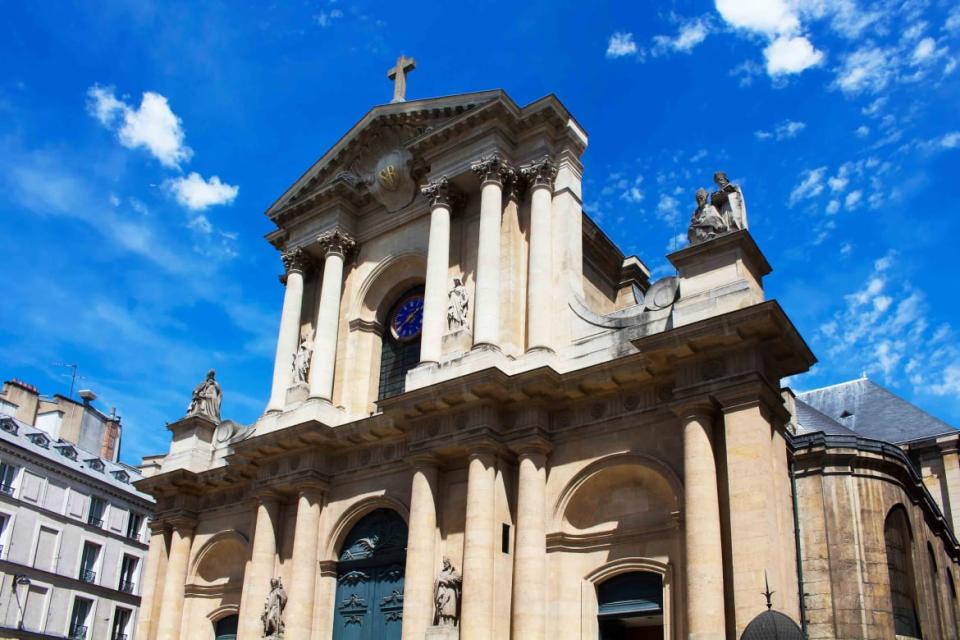
Baroque church in Paris
The journey continued with a stroll further down the Rue Saint-Honoré to the Église Saint Roch. I stood outside this one in 2008, among the crowds that gathered for designer Yves Saint Laurent’s funeral, and have visited Verbreuil Saint Roch, an artisan bag store next door which shares walls with the church. But now I walked past the homeless people who sit on the steps 24/7, and walked inside this late Baroque church. Louis XIV laid the first stone for the church, which is dedicated to Saint Susanna, in 1653. There were many events and even shootings here during the French Revolution when it was ransacked. One of the highlights of the church today is a giant blue and gold design on the back wall that looks like an expensive high-jewellery broach. On Saturday night, there were a half-dozen people inside but the promise of good music with upcoming gospel choir concerts were advertised in the lobby.
Saint Thomas d’Aquin
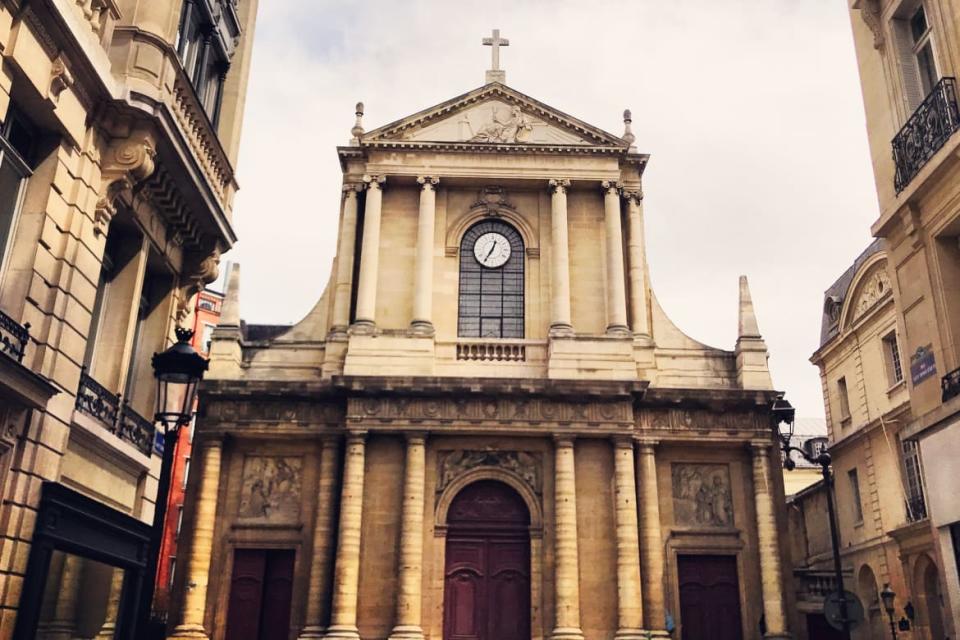
Church of Saint-Thomas-d’Aquin, Eglise catholique Diocese de Paris
I found Saint Thomas d’Aquin by following a cross visible from nearby Rue de Bac. Constructed in 1682, and designed by architect Pierre Bullet, this neat church on a stylish square took a break from religious service after monks were expelled in 1793, during the French Revolution. Today it stands in a peaceful spot in the lovely 7th arrondissement, next to a future campus for one of Paris’s top schools, Sciences Po. It’s another great spot to get away from the hustle and find peace and quiet.
Sainte-Clotilde
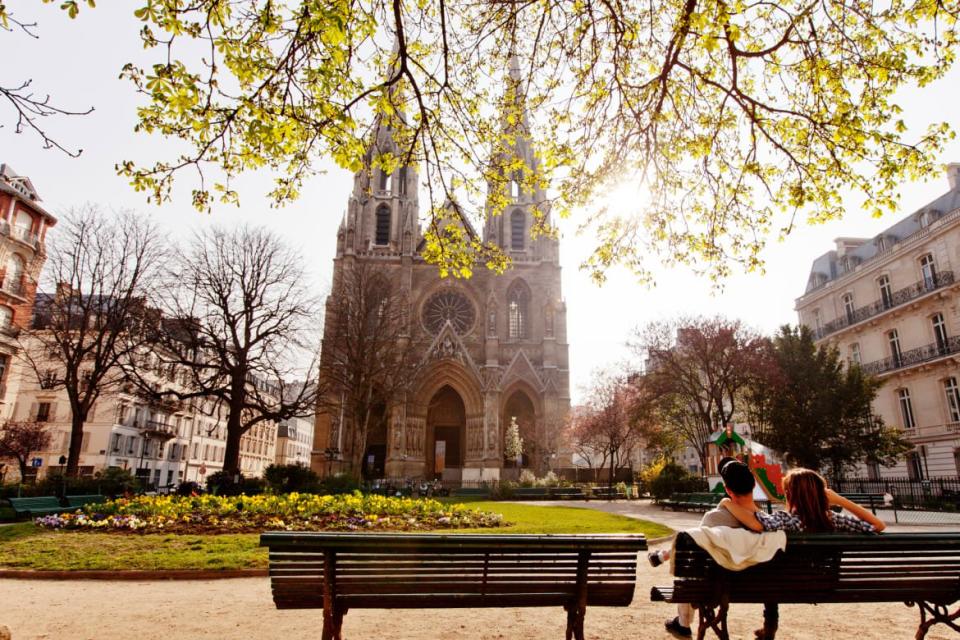
Sainte Clotilde church from Samuel Rousseau garden.
As darkness fell, I ventured along Rue de Grenelle, one of the most exclusive streets in Paris, getting deeper into the highbrow 7th arrondissement. I ventured inside a stunning church that I walked by most days and often marveled at but have never been inside. Indoors Sainte-Clotilde whose striking towers rise from beyond an immaculate square, choir boys placed candles around the stone columns that run through these cool interiors. Priests came and went from a dressing room, and a smattering of locals gathered for service. It was beautiful.
The Dome
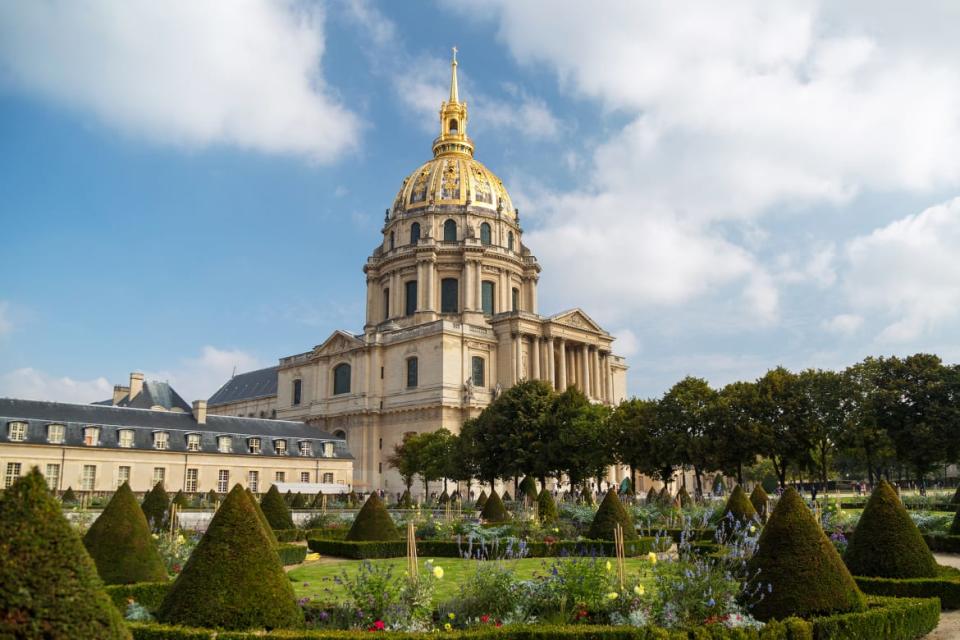
A frontal view of the Hotel Des Invalides in the 7th arrondissement of Paris, France. The building celebrates the military history of France and is the burial place for a number of France's war heroes. The domed building was built as the final resting place for Napoleon Bonaparte and was finished in 1861, decades after his death.
I walked home to the 7th, passing though possibly the most imposing square in Paris, Place des Invalides where Napoleon’s tomb stands inside a royal chapel, known as the Dome. Built from 1677 onwards, the Dome also served as an army barracks during WWII. Vauban’s mausoleum is inside, and Napoleon was laid to rest there in 1861 after his body was returned from
St. Helena
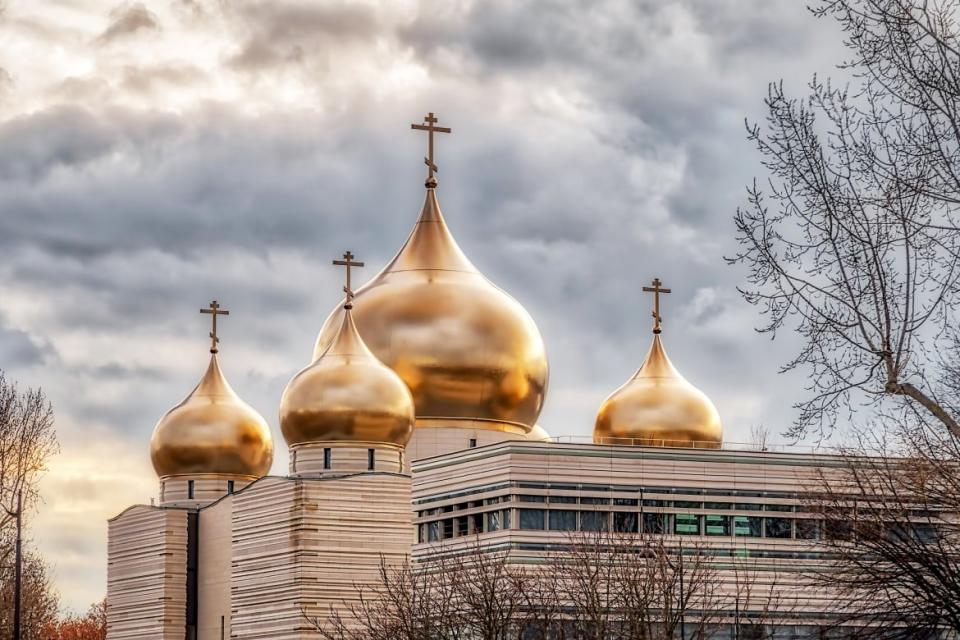
The Holy Trinity Russian Orthodox Cathedral - Paris, France
Easter Sunday at the Holy Trinity Cathedral and Russian Orthodox Spiritual and Cultural Center
The journey continued the next morning with the Russians. It was Palm Sunday—the Orthodox Easter falls a week after the Catholic Easter this year. Completed in 2016 by architect Jean-Michel Wilmotte, this new Russian cathedral with its combination of clean minimalist exteriors and gold, Russian-style bauble domes on the roof, is Paris’s funkiest church. Russian families gathered inside to watch a colorful ritual, with priests dressed in shimmering robes. It was another community expat moment inside these beautiful interiors with their modern-day frescoes.
American Cathedral and American Church in Paris
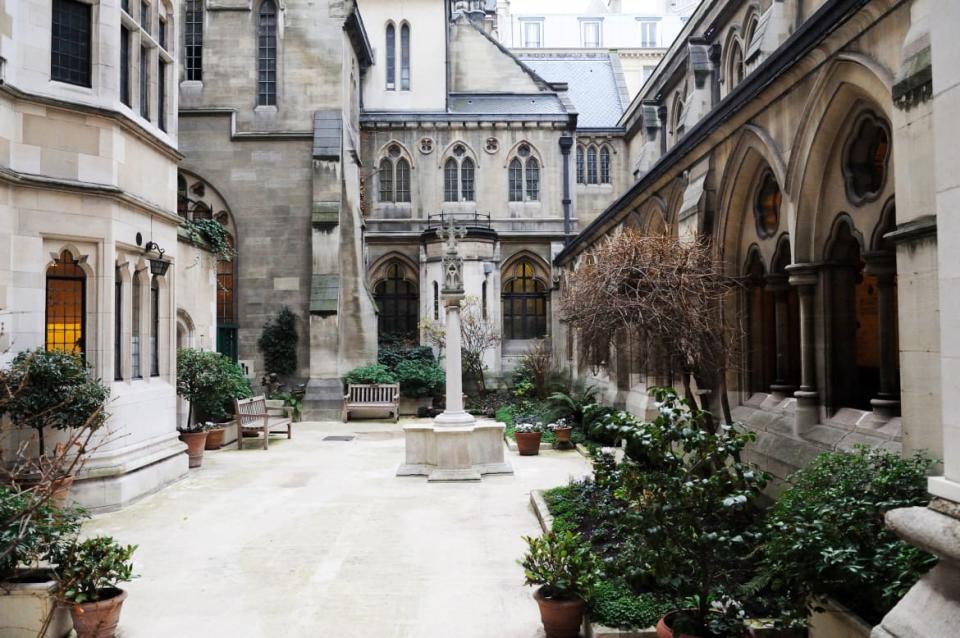
The American Cathedral in Paris (Cathedral of the Holy Trinity) at 23 avenue George V in the eighth arrondissement, on the occasion of appointment organized by missing 'Paris Match' with British singer Susan Boyle (depressive, it n did not want to leave his hotel room). (Photo by Hubert Fanthomme/Paris Match via Getty Images)
In March, one of the most stunning shows at Paris Fashion Week took place inside the American Cathedral. Indian designer Manish Arora’s colorful Indian designs were paraded through the aisles, before a grand finale was shown by the altar. This Gothic-style cathedral was completed in 1886. The striking American Church complex nearby sits on the other side of the Seine. The first American church outside of the U.S. dates back to 1814.
L’Oratoire du Louvre
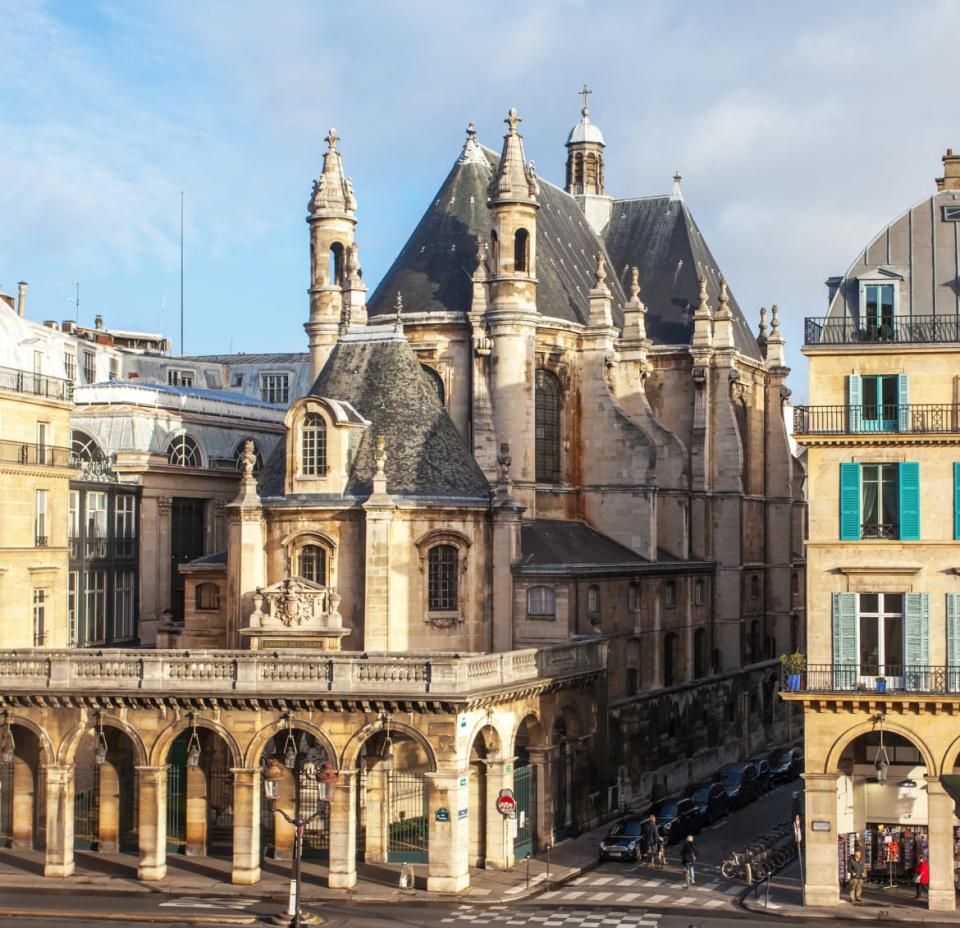
The Temple Protestant de l'Oratoire du Louvre, also Eglise Réformée de l'Oratoire du Louvre, is a historic Protestant church located near the Louvre in central Paris.
Another favorite with the fashion community is the Oratoire du Louvre on Rue Saint-Honoré. Witness recent fashion shows from designer Iris van Herpen to French couture designer Julien Fournie. The American community worshipped here before they had their own church. This Protestant church sits opposite the Louvre and was founded in 1611. It became the royal chapel for the Louvre Palace in 1623.
For those looking for the less obscure, my favorites among Paris’s most famous churches include:
Saint-Sulpice
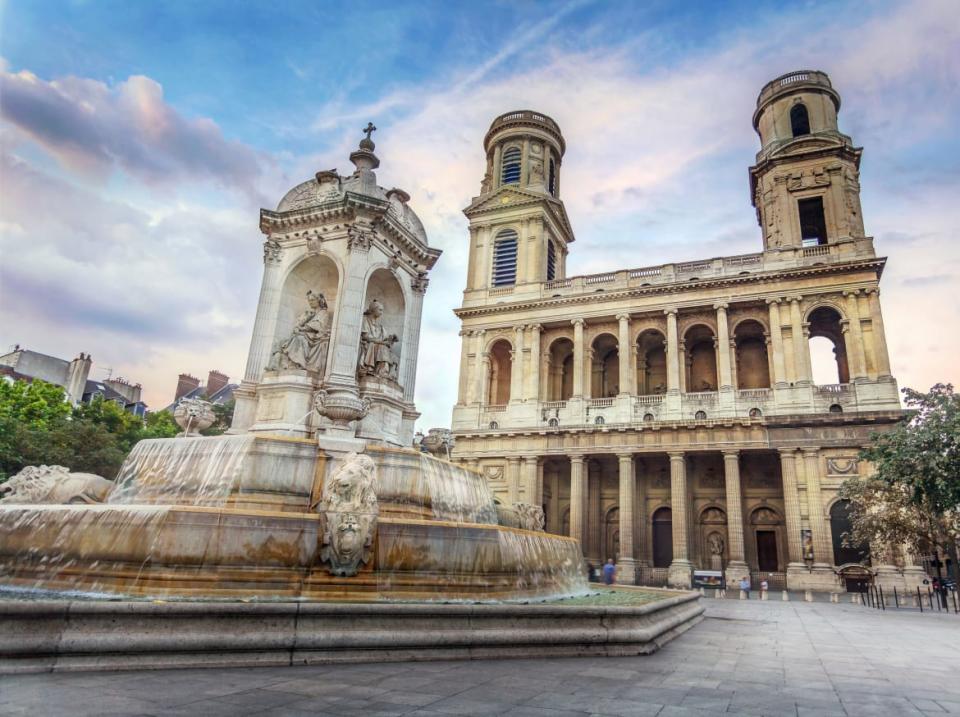
The Church of Saint-Sulpice and Fountain in Paris, France.Late Afternoon in Summer.
Made famous by the Da Vinci code, this church in Saint Germain was deserted on Easter Sunday afternoon. Its iconic west facade was added in the late 18th century and inspired by Christopher Wren’s St. Paul’s Cathedral in London.
Saint-Eustache
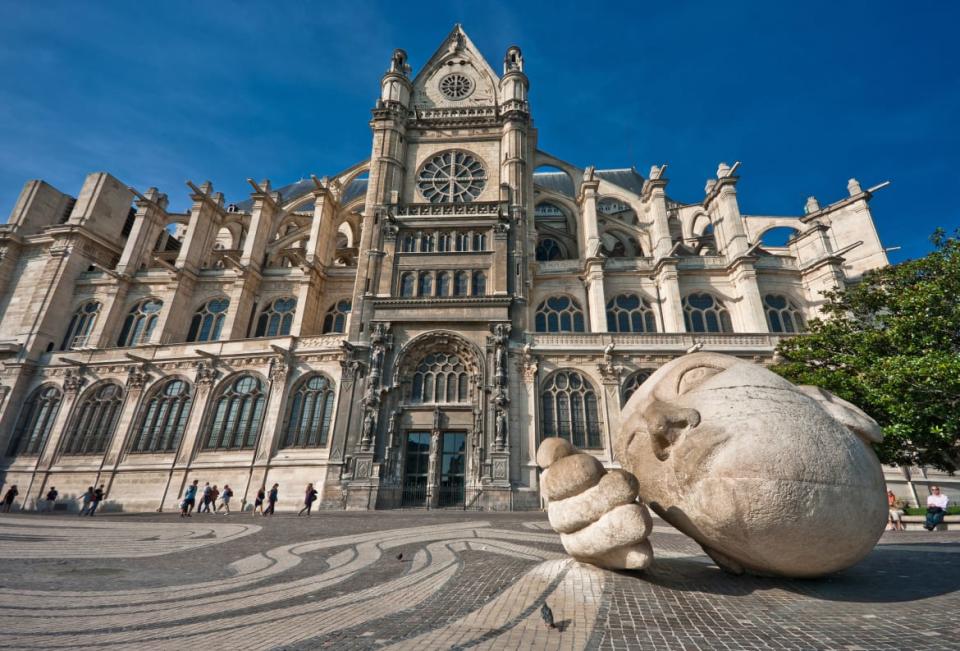
It gets overshadowed by the eyesore Les Halles shopping complex at the center of Paris but has some beautiful frescoes and domes inside. Renovations are ongoing.
Sainte-Chapelle
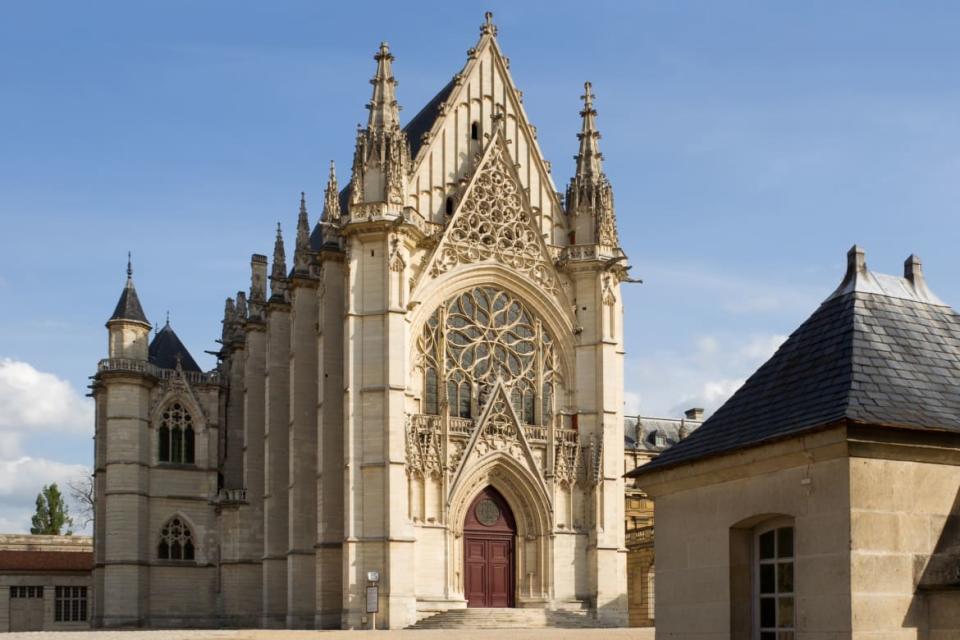
The Sainte-Chapelle, founded in 1379 inside the Vincennes Castle near Paris, France
The only church in Paris that I found to have long lines around the block, this one is famous for its stained glass windows and beautiful hand-painted interiors that are similar to the beautiful church on Boulevard Saint-Germain. It was the chapel of the kings of France until the 14th century, and was built in Gothic style. It was consecrated in 1248.
Saint-Gervais-et-Saint-Protais
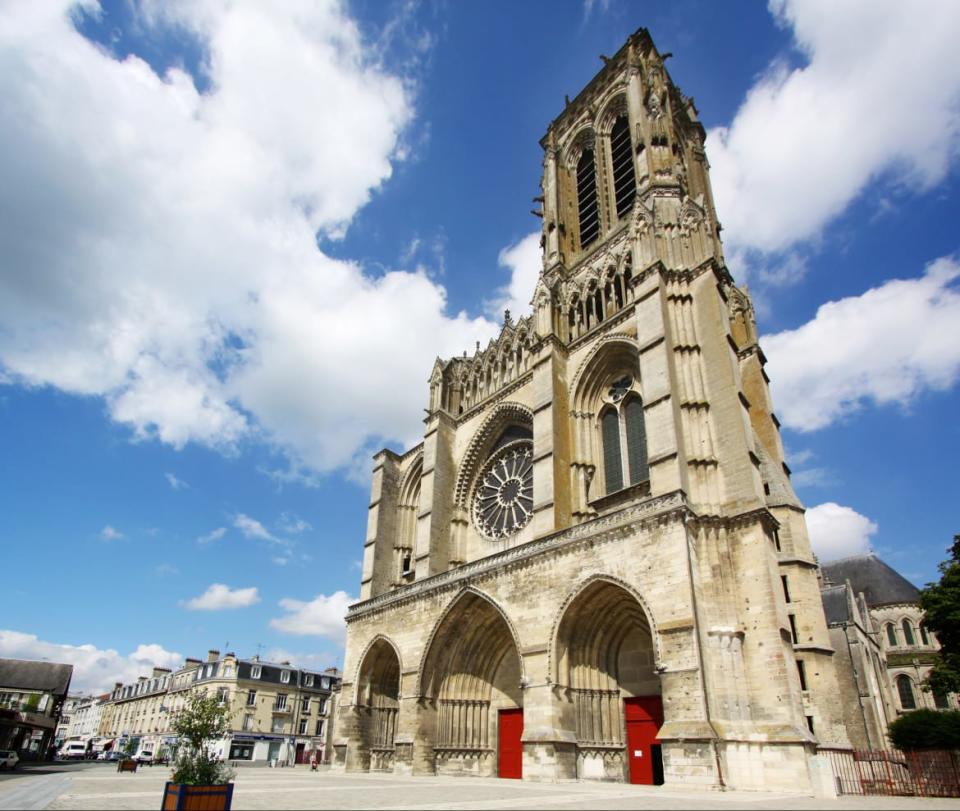
Built between 1494 and 1657, the current church of Saint-Gervais-et-Saint-Protais is situated in the trendy Marais district. It was the first example of French Baroque style in Paris. It has a higher bell tower than Notre Dame and was a target for the Germans during World War I.
Sacré-Coeur Basilica
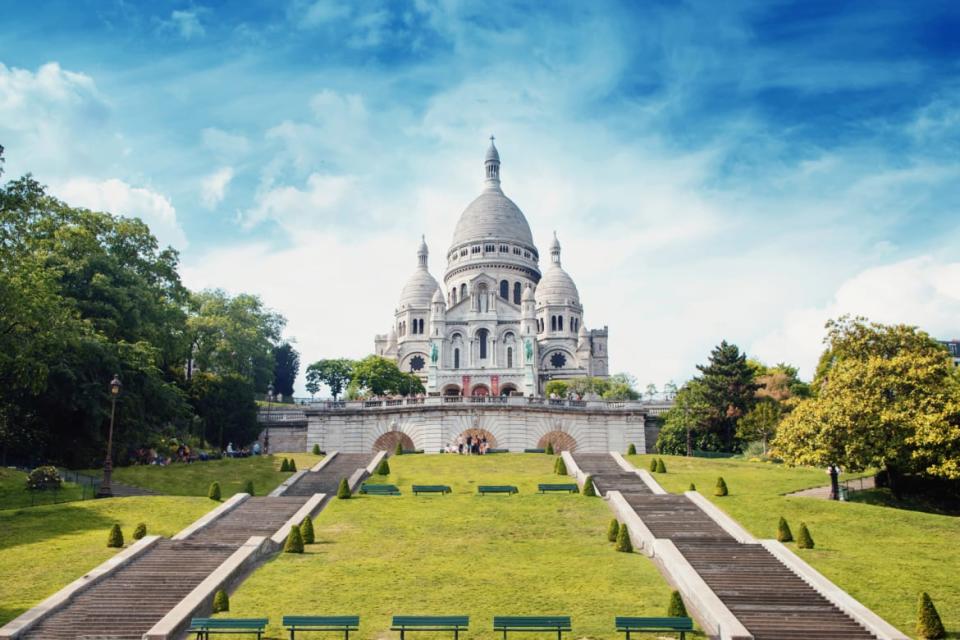
Sacre Coeur Basilica in Montmartre, Paris, France
I spent one fashion week staying inside a convent that is part of the Sacré-Coeur, which is one way to get even deeper inside Paris’s church culture that I would recommend. I had a bird’s eye view of the church from my convent room and took lunch with the nuns. The second most visited site in Paris, it sits on the highest point in the city on the Butte Montmartre. Designed by Paul Abadie, it was constructed between 1875 and 1914 and consecrated in 1919, after WWI.

